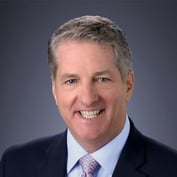The ComFrame (International Association of Insurance Supervisors (IAIS)’s Common Framework for the Supervision of Internationally Active Insurance Groups) draft comments are now in, and interested parties or “observers” had lots to say about the new draft in terms of governance, flexibility, and the definition of what is an internationally active insurance group (IAIG).
The NAIC and U.S. insurers are joining sovereign nations and other parties weighing in on a supervisory architecture that will have a great deal of impact on the global regulation of anywhere from 50 to 100 IAIGs expected to be identified worldwide. The IAIS released the working draft for comment on July 2, 2012 for a two month public comment period that ended Aug. 31. The 2012 ComFrame Draft marks the completion of the second step in its three-year development phase ending less than a year from now.
ComFrame is a framework for the group-wide supervision of IAIGs that began development in July 2010. It is meant to provide a framework consisting of basic standards for IAIGs and a process for supervisors to comprehensively address the risks arising in IAIGs that may have many different roots. Both the requirements and the process touch on governance and risk management, structure and strategy as well as financial conditions.
However, it may be hard to define it more accurately given the draft and the comments.
To wit, “ComFrame has an identity crisis–it is not clear whether ComFrame is a framework to provide greater consistency and cooperation among supervisors who supervise IAIGs or whether it is attempting to create an entirely new regulatory regime applicable to IAIGs,” ACE Group let the IAIS know as part of its feedback.
“The introductory remarks to ComFrame state that ‘the IAIS aims to develop methods of operating group-wide supervision of IAIGs in order to make group supervision more effective, to establish a comprehensive framework for supervisors to address group-wide activities and risks and also to set grounds for better supervisory cooperation as well as to foster global convergence of regulatory and supervisory measures and approaches”. Ace supports these goals to establish more consistent approaches to the supervision of IAIGs and more coordinated activities by our global supervisors. However Module 2 is directed at IAIGs and seems to be substituting regulatory requirements for the judgment of management regarding how to operate an insurance group. The elements of Module 2 should be re-cast as guidance to supervisors regarding the supervision of IAIGs,” ACE Group suggested.
Prudential Financial spoke strongly of the concerns of many companies involved in the U.S. insurance industry when it said that the “overall tone and text of the modules continues to be overly prescriptive, and appears to envision a new and additional regulatory regime for IAIG’s.”
Added the Property Casualty Insurances Association of America (PCI), “the concepts of “group-wide underwriting policy, group-wide claims settlement policy, etc., do not work for groups that operate in jurisdictions with different legal systems and market conditions. Further, they do not work for groups in which subsidiary insurers operate under independent managements.”
PCI called for declarative revisions to ComFrame that would “once and for all clarify the core tenets of the framework and will hopefully go a long way towards alleviating any future concerns over the level of prescription in ComFrame.”
The NAIC and others are looking for flexibility and criteria for what constitutes an IAIG.
“The criteria used to identify IAIGs should be clear and focused on identifying those entities which have a large presence internationally. The criteria should be simple and allow the involved supervisors to adjust using their judgment if circumstances necessitate a different answer (‘constrained supervisory discretion’),” the NAIC stated.
With respect to the current draft, consideration should be given as to whether the criteria for the number of jurisdictions in which an IAIG operates should include threshold percentage of market share,” the NAIC said.
MetLife was more specific. It suggested that the ComFrame criteria should be narrowed by, for example, increasing- the number of countries in which premiums are written to seven-percentage total gross premiums written outside home jurisdiction to not less than 20% of the group’s total gross premium written globally, and – total assets to not less than $100 billion, or annual gross written premiums of not less than $20 billion globally.
Currently, many jurisdictions feel the threshold is too low, making insurers that operate in as little as three countries, even those in Europe, an IAIG.
The NAIC also said there is still some inconsistency within the material regarding the flexibility allowed in meeting group governance expectations.








 September 06, 2012 at 06:11 PM
September 06, 2012 at 06:11 PM










